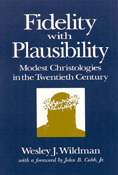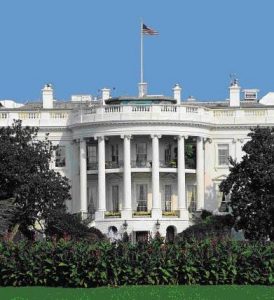
Fidelity With Plausibility: Modest Christologies in the Twentieth Century. By Wesley J. Wildman. Albany: State University of New York Press, 1998. 441 pages.
“The message of the cross is foolishness to those who are perishing, but to us who are being saved it is the power of God….For the foolishness of God is wiser than man’s wisdom, and the weakness of God is stronger than man’s strength,” says the Apostle Paul in 1 Corinthians 1:18-25. Wesley Wildman opens his discussion on the emergence of Christological absolutism with these verses. The message of these verses, says Wildman, testifies to a scandal of divine concern, “an affirmation of the loving provision of God for human salvation” (149), but it does not demand an absolutized Christology; Christological absolutism was a later development. It was the scandal of divine concern, Wildman reiterates, that was so redeeming and “foolish”.
This is the message, then, that Wildman carries with him throughout his book: he resists any Christological absolutizing as implausible for a modern world but insists that a non-absolutist Christology is still faithful to the Christianity found in the Bible and early Christian creeds. As part of this insistence, he affirms the divine scandal, primarily in the incarnation, as still plausible within a non-absolutist framework and, as a scandal of divine concern, potent in its implications for personal faith and for the modern church. The book is a scholarly one and readers would benefit from a familiarity with other Christological writings; but the patient reader will also find within the pages a message acutely applicable for modern church contexts, especially liberal-evangelical ones. Wildman insists that, even in the context of religious pluralism, the Christian faith can still be both an honest reflection of historical development as well as a faithful expression of the early church. His message, then, is one that strives for cohesiveness amidst unfolding diversity, and it is this Christological message that liberal-evangelical churches can build upon.
The crisis of plausibility for Christology, points out Wildman, is not a recent development but a crisis that has been reaching toward a climax for the last two centuries. Historical research on the life of Jesus, scientific discoveries especially regarding the age and expanse of the universe, the sociological and psychological aspects of religious commitments, and the increasing awareness of religious communities not affiliated with Christianity have all made the idea of a born-once-and-for-all savior in the person of Jesus an implausible thought. Attempts to absolutize the Jesus event in this way, says Wildman, do not take seriously the need for a realized Christologically-based faith to depend in some measure on what is known (or not known) about the historical person of Jesus in addition to what is known regarding the early Christian communities’ views about Jesus.
As Wildman explains throughout the first part of his book, the variables contributing to the implausibility of an absolute Christology were gathered together most succinctly in the writings of Ernst Troeltsch in the early twentieth century. Troeltsch realized that the Christian faith must engage in a different “relationship with history…than in the past” (118). At the same time, explains Wildman, Troeltsch rightly felt that in order to “keep alive the distinctly Christian idea of God” (119) and the Christian community, something “must be said about the person of Jesus Christ on the basis of his religious significance” (119). So Troeltsch’s response to the problem of the implausibility of an absolutized Christology was to construct a Christology that explained how the centrality of Jesus came to be, how it could be preserved and why it should be preserved (126). In doing so, Troeltsch constructed a Christology that rejected any absolutized versions of Christ’s significance as well as any literal incarnational statements. Troeltsch’s Christ was a religious founder, an archetype for Christian communities to rally around, and manifestation of the divine; and Christianity itself became, for Troeltsch, “the highest religious development that [could] have significance for Europeans” (137).
Wildman’s response to Troeltsch, primarily in the second part of the book, is two-fold. On the one hand, he agrees with Troeltsch that an absolutist Christology is both implausible, irrelevant, and impotent for modern communities of faith. On the other hand, he does not believe that a plausible, historically-based Christology needs to jettison all incarnational affirmations. The incarnation, according to Wildman, can be rendered plausibly as the divine scandal; it can be meaningfully framed as the “foolish” act of God which makes the Christological message so powerful. Any Christology, furthermore, which does not embrace the incarnation in some sense would risk severing its ties with the roots of Christian faith-communities as testified to in Scriptures and the classical Christian creeds. Scriptural and creedal affirmations of the incarnation, demonstrate Wildman, may have been thought of in terms of an absolutist principle, even by the people who composed them, but they do not demand an absolutist principle; they could be applied to other, non-absolutist incarnational possibilities.
At the same time Wildman recognizes, along with Troeltsch, that a non-absolutist Christology could create unstable Christian communities, specifically within churches. Absolutist Christologies have “socially cohesive value…in [their] ability to provide a rallying point for Christian believers” (190). When a non-absolutist Christology embraces an incarnated Christ, however, such a marriage of convictions could be “precisely what is needed for securing the unity and ethical energy of the Christian churches” (190). In those churches where absolutist versions of the Christ message have been acknowledged as implausible, an incarnational Christ has the power to unite people across their differences without remaining trapped inside a hermeneutically sealed community of like-minded believers. A non-absolutist, incarnational Christ, says Wildman, is capable of embracing both “impartial supernaturalist” (i.e. supernaturalism that doesn’t favor one religion over another) and “ecstatic naturalist” (i.e. religiously potent non-supernaturalist) worldviews; it discourages “hermeneutically absolutized renderings of reality, of personal development and salvation, of society and history, of ethics and sacraments” (368); and it can encourage congregants to embrace their seemingly paradoxical viewpoints because the ultimate, wisdom-shattering mystery of the incarnation is the loving paradox of God extending reconciliation to creation.
Throughout the book Wildman insists that Christian churches need to be faithful to the classical Christian message found in the creeds and Scripture. He also insists that they need to be honest about the ambiguous reality of the expansive natural universe, the authentic reality of other religions, and the diversity within their own traditions. And they need to have a cohesive power strong enough to keep people with different opinion together in a sincere, loving community. He presents the case that a non-absolutist, incarnational Christology is best able to do this and encourages further exploration of his principles for future Christological work. His book, then, can be helpful for churches struggling to define the Christ they share with the earliest of Christian churches and a Christ still powerful enough to give them identity in a modern context. It is also helpful for individuals wrestling with ways to think about Christ when the Christologies they are most familiar with do, indeed, seem implausible, impotent, or just irrelevant.
Fidelity with Plausibility, though, as an exhaustive analysis of the range of twentieth-century Christologies, is as scholarly-detailed as it is poignant in its assertions and mannerisms. It is not a book for a popular audience and thus lacks the visceral edge we normally expect from accessible books. Readers will have to be prepared to appropriate its conclusions into their own contexts in order to implement the book’s theorizing in a practiced commitment. When they find themselves with the opportunity to do this, however, Wildman paves a way for them to embrace a plausible, reconciling experience of the divine scandal without rejecting the reality that there are absolute, personal needs which are often met only in an encounter with Christ.
Sally Paddock
Boston University



